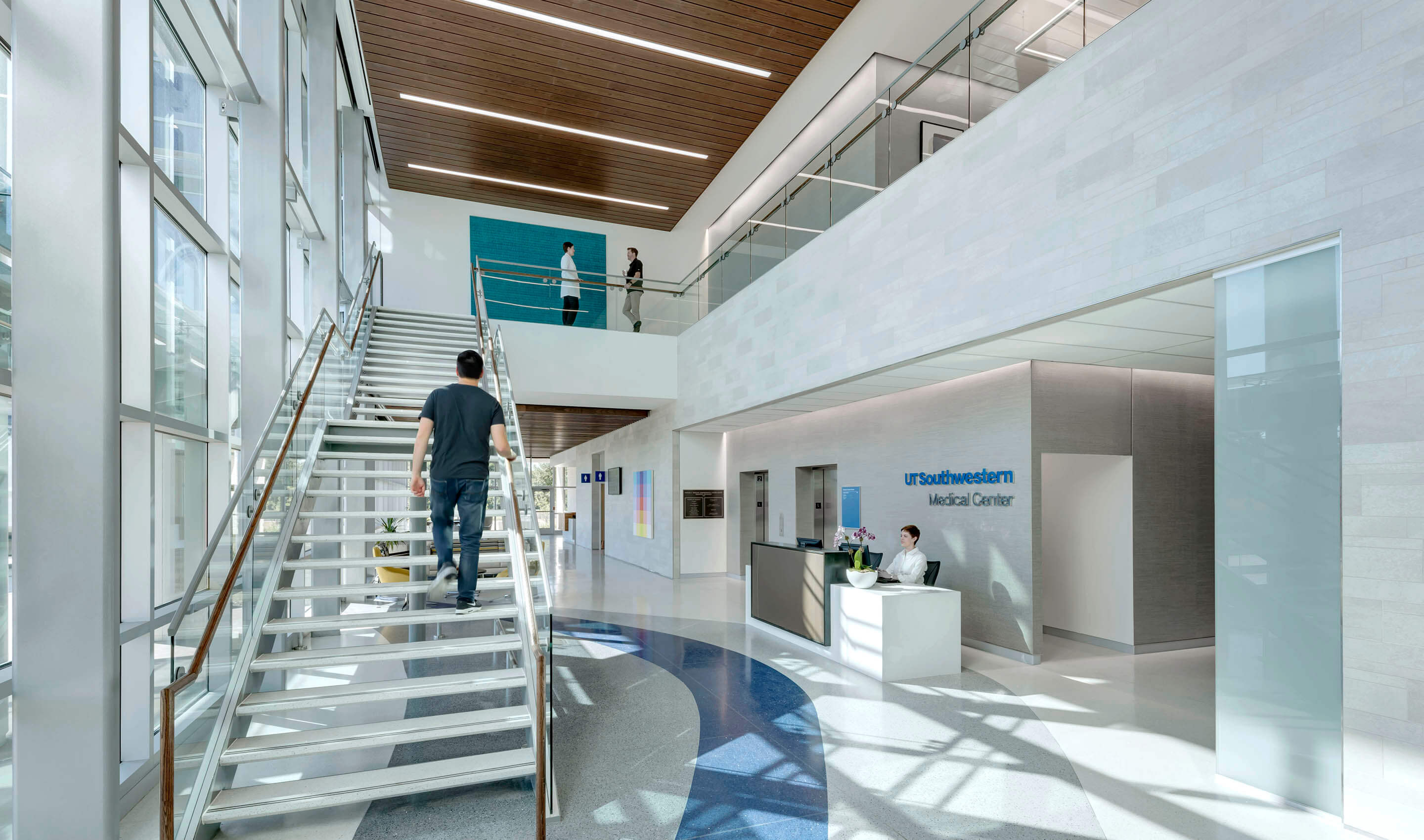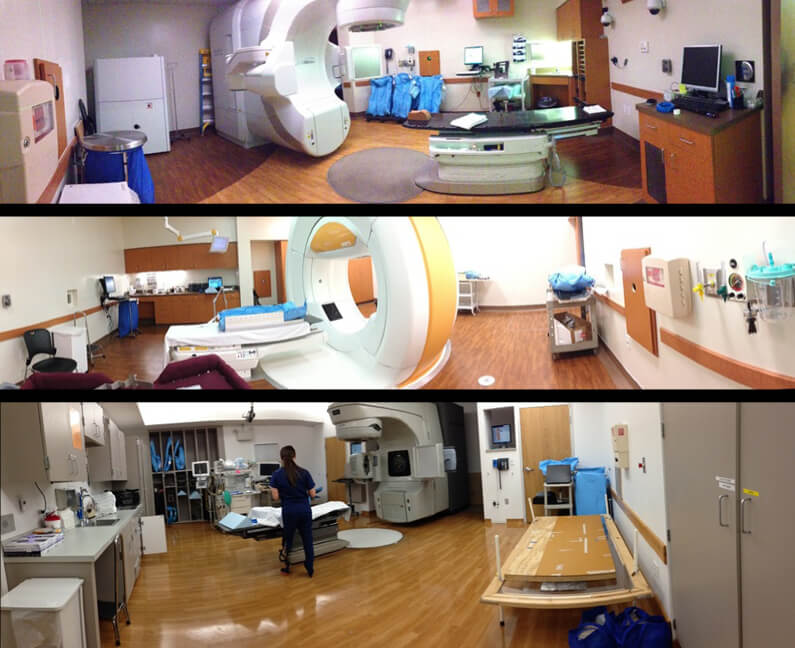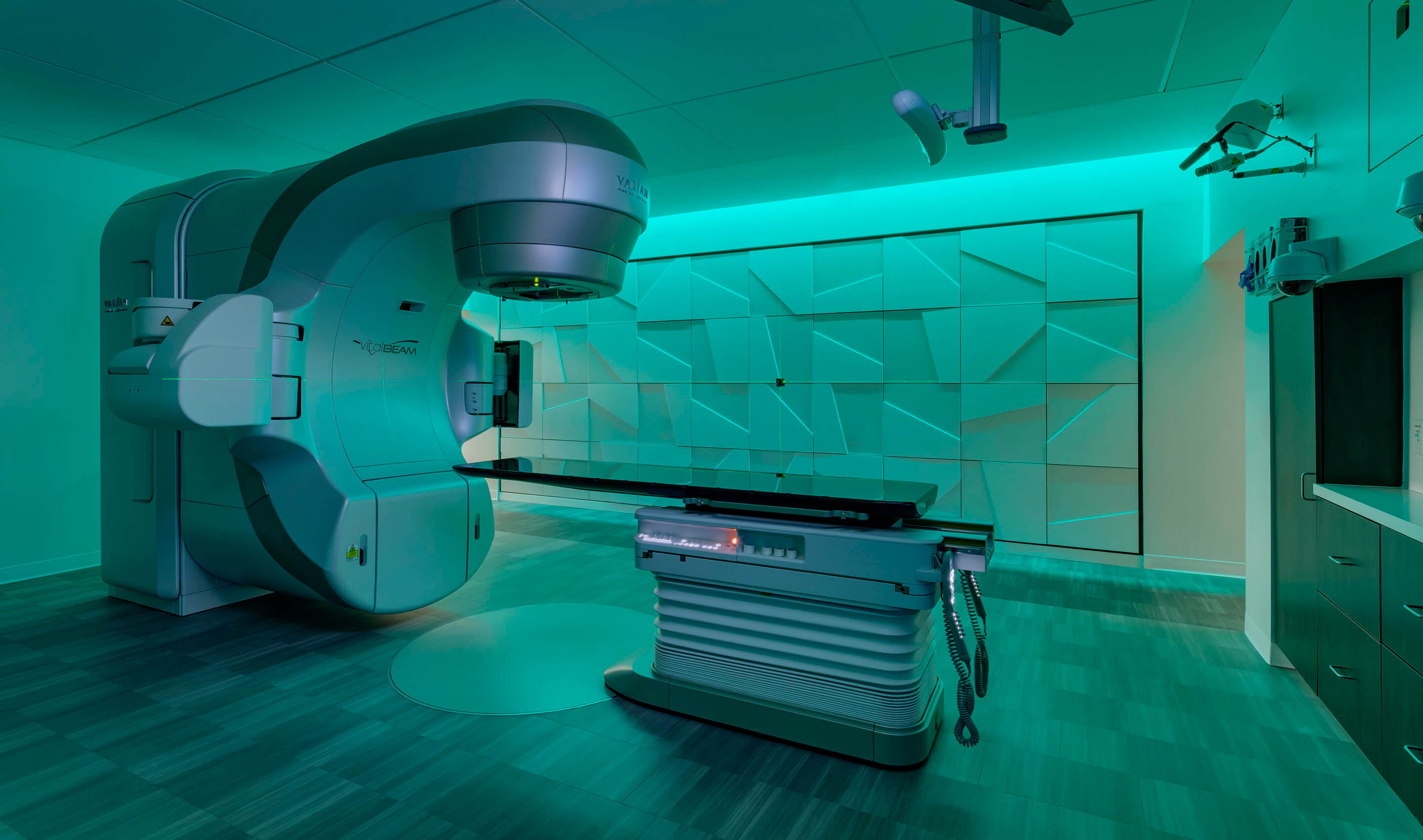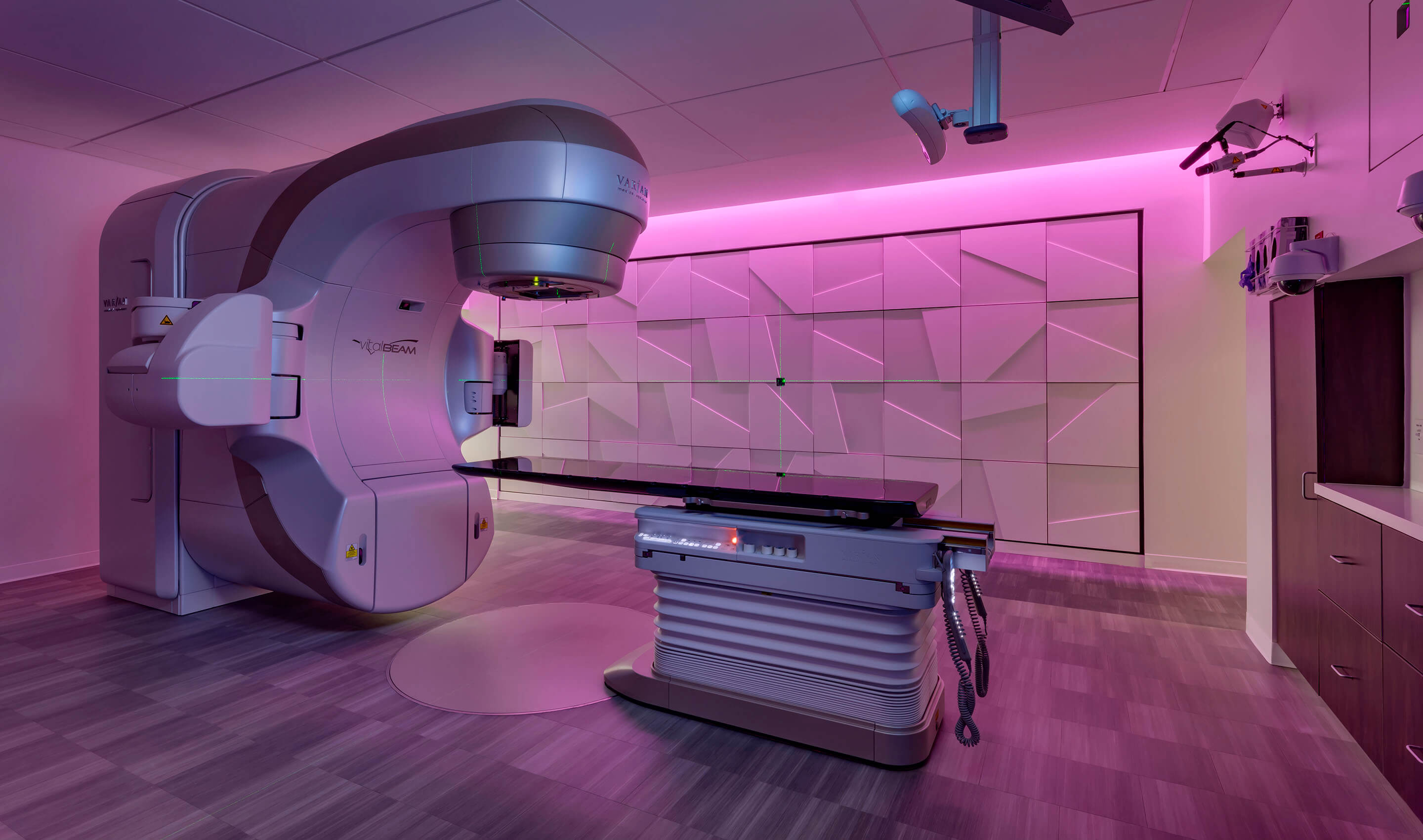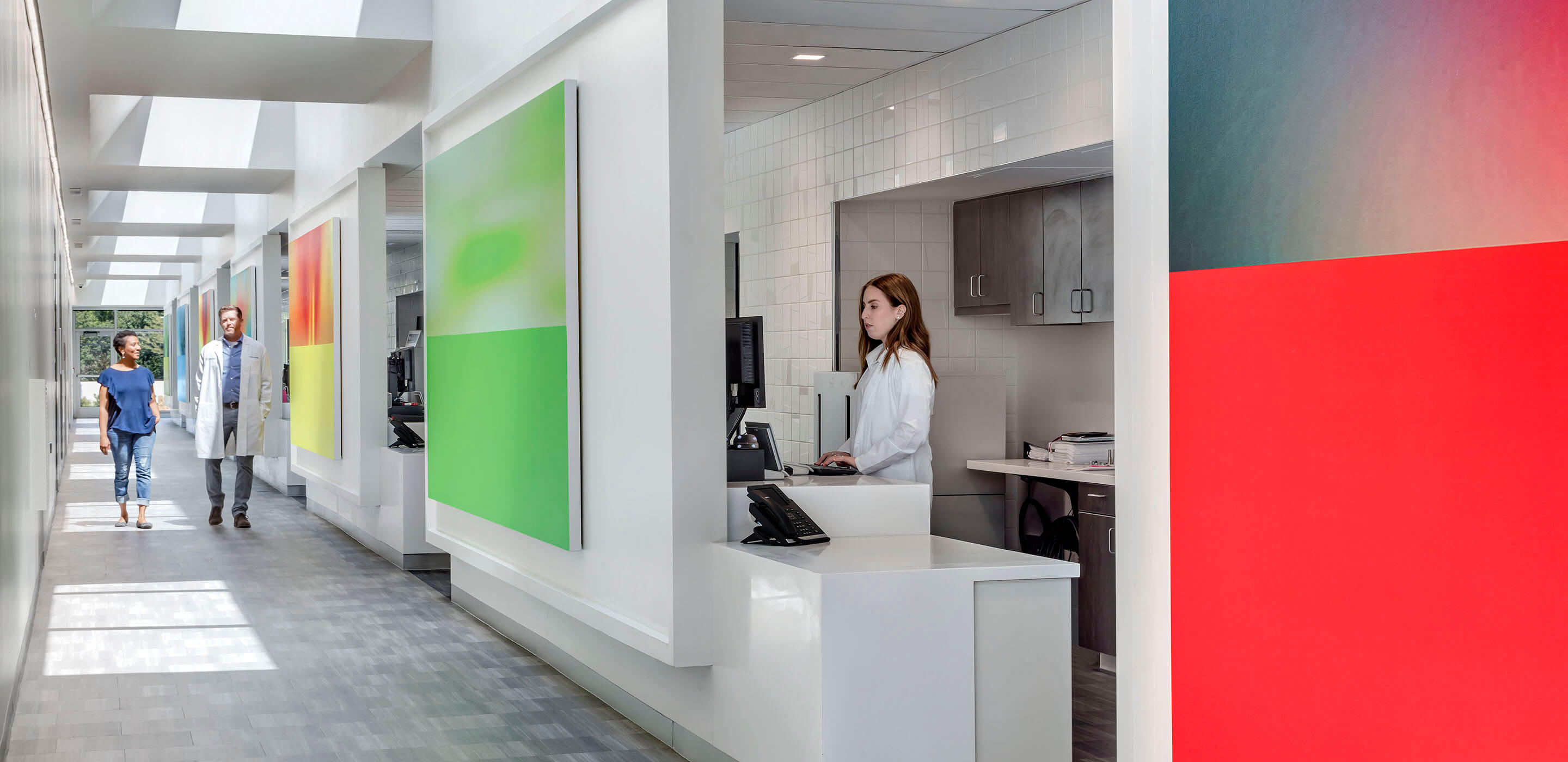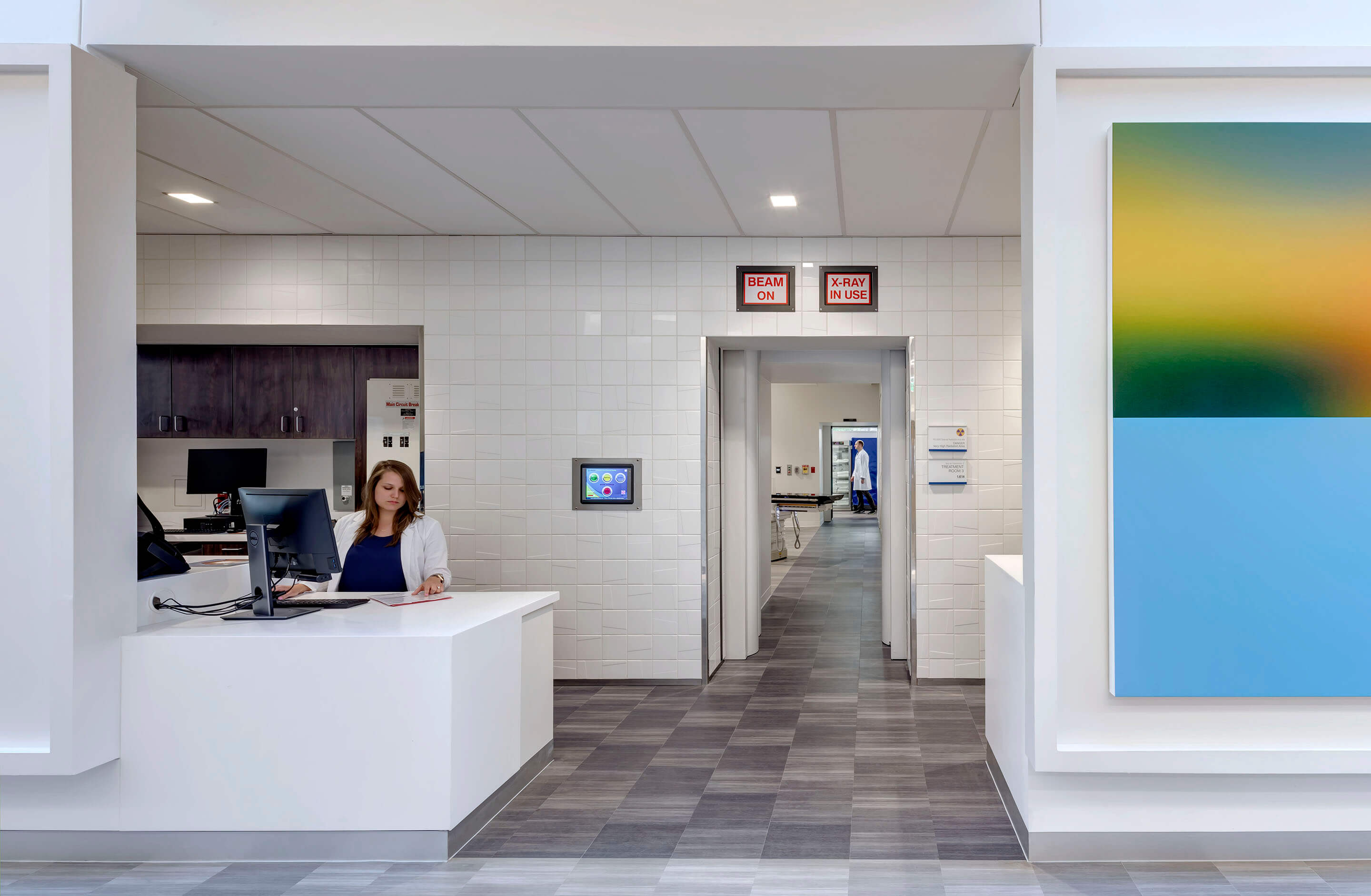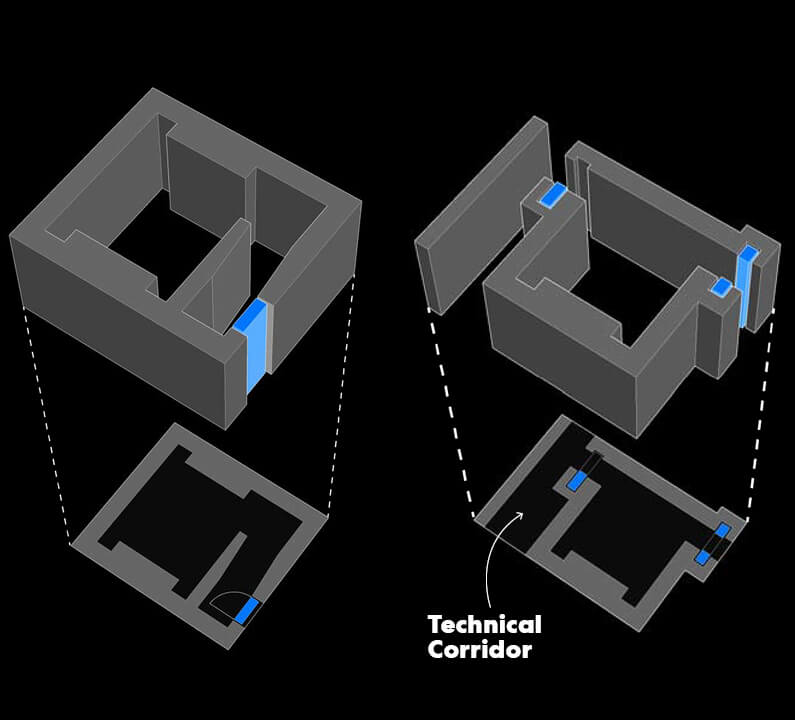UT Southwestern’s Simmons Cancer Center is internationally renowned for cancer research and treatment; its designation as a Comprehensive Cancer Center by the National Cancer Institute—one of about 50 across the U.S.—speaks to its exceptional quality of care.
Always innovating, in 2017 UT Southwestern set out to enhance the patient experience in its radiation oncology building with a renewed look, feel, and function. When clinicians, researchers, and facility managers asked the Dallas-based architects they partnered with to “rethink everything,” that’s exactly what they did.
“The client had a bold vision that would impact the whole facility, so our design had to be just as bold,” says Perkins&Will architect and medical planner Sapna Bhat.
Not long after the project’s completion, Bhat authored an article for her firm’s peer-reviewed research journal—a bi-annual compilation of design intelligence and analysis— about how she and her team redesigned this complex, high-tech healing environment to optimize the experience of cancer care. The following is an adaptation of her journal article, “Outside the Box: An Innovative Approach to Vault Design and the Evolution of the Radiation Oncology Environment.”


